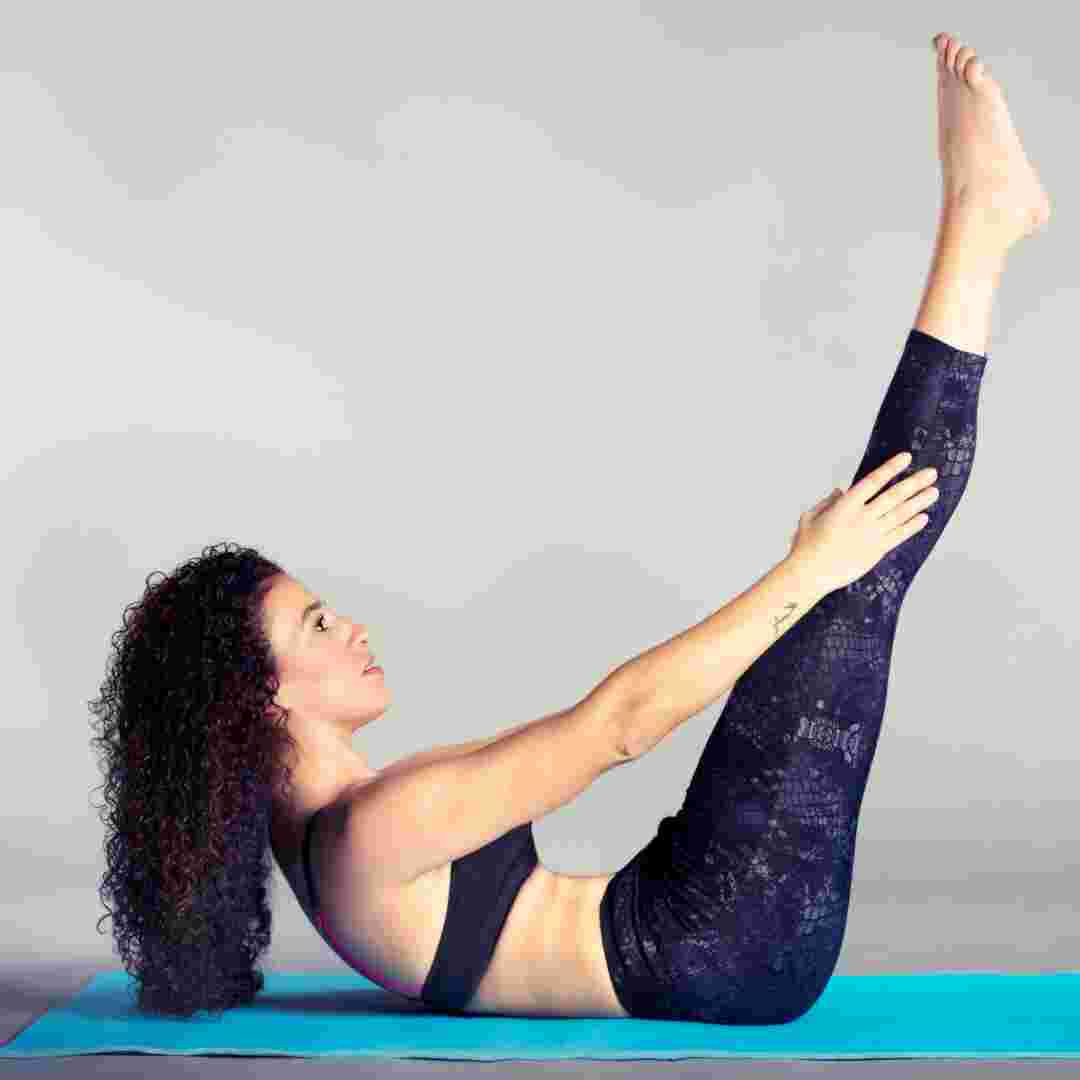Table of Contents
Introduction
Making Pilates Socks: A DIY Guide
5 Easy Steps to Make Pilates Socks at Home
Pilates Socks: A Beginner's Guide
Q&A
Conclusion
DIY Pilates socks: Add grip using simple materials."
Introduction
Pilates socks require socks, non-slip fabric, scissors, and fabric glue.
Making Pilates Socks: A DIY Guide
Pilates is a popular exercise that strengthens core muscles, improves flexibility, and balances the body. Socks are needed for Pilates. Pilates socks reduce slips and falls by improving grip and stability. There are various Pilates socks on the market, but making your own may be fun and gratifying. This post will help you make Pilates socks.
Materials needed:
Pilates socks require these materials:
– 1 pair of ordinary socks – Non-slip fabric paint or puffy paint
A cardboard or paper
– Scissors – Pencil – Ruler
Guide Steps:
1. Choose comfortable socks. Since loose socks might cause slips and falls during exercise, pick comfortable, snug socks.
2. Insert cardboard or paper into the sock to prevent paint from bleeding.
3. Mark the non-slip paint areas with a ruler and pencil. The sole and heel of Pilates socks include non-slip spots or lines.
4. Use a brush or applicator to apply non-slip paint after marking. It's best to select a colour that contrasts with the sock for improved visibility.
5. Create dots or lines by circularly applying paint. Apply enough paint to make a thick, durable covering.
6. Remove the cardboard or paper from the sock when the paint dries. Before wearing socks, let the paint dry for 24 hours.
7. Use your Pilates socks after the paint dries. For non-slip paint durability, wash and air-dry them in cold water.
Tips and Tricks:
Instead of non-slip fabric paint, use puffy paint. Puffy paint raises for improved training grip and stability.
You can try different designs and patterns with non-slip paint. Create stripes, polka dots, or any other design.
– Apply paint evenly and thickly for increased grip and durability.
Use stencils or templates to produce a more accurate design if you're not sure in your painting talents.
Conclusion:
DIY Pilates socks are fun, quick, and cost-effective. You may customise them to meet your taste and needs. You can make non-slip Pilates socks to improve your practise and prevent falls with a few inexpensive materials and some ingenuity. So take your socks and paint and unleash your inner artist!
5 Easy Steps to Make Pilates Socks at Home
Pilates is a popular exercise that strengthens core muscles, improves flexibility, and balances the body. Socks are needed for Pilates. Pilates socks reduce slips and falls by improving grip and stability. Pilates socks are available in stores, but sewing your own is fun and easy. This post shows you how to make Pilates socks at home in five easy stages.
First, gather materials
Gathering materials is the first step in producing Pilates socks. Regular socks, non-slip fabric, scissors, and a sewing machine are needed. Workouts require non-slip fabric for grip and stability. Any fabric store or online retailer sells non-slip fabric.
Second: Cut Non-Slip Fabric
After gathering all the ingredients, cut the non-slip cloth into small pieces. Depending on the size of your socks, cut the fabric into little circles or squares. The non-slip fabric should be somewhat smaller than your sock sole.
3: Attach Non-Slip Fabric
After cutting the non-slip fabric, attach it to the sock sole. Attach the non-slip fabric to the sock sole with a sewing machine. Securely stitch the non-slip fabric to prevent it from falling off throughout the workout.
Step 4: Repeat
Continue with the other sock. If needed, you can produce as many Pilates socks as you wish. To make your Pilates socks more trendy and personalised, try different colours and designs.
Step 5: Try Pilates Socks
Testing Pilates socks is the last stage. Try Pilates with these on to feel them. Ensure the non-slip fabric provides enough grip and stability during exercise. Identify faults and make improvements.
In conclusion, sewing your own Pilates socks at home is a fun and easy DIY project that can save you money and provide you customised socks. These five simple techniques can help you make Pilates socks quickly. Gather all materials, cut the non-slip fabric, apply it to the sole of your sock, repeat for the other sock, and test your Pilates socks. With your new Pilates socks, you can workout safer and more comfortably.
Pilates Socks: A Beginner's Guide
Pilates is a popular exercise that strengthens core muscles, improves flexibility, and balances the body. Socks are needed for Pilates. Pilates socks reduce slips and falls by improving grip and stability. Pilates socks can be bought in stores, but sewing them at yourself is fun and cheap. This beginner's lesson will teach you how to make Pilates socks.
Materials needed:
Pilates socks require these materials:
– Regular socks – Non-slip fabric paint
Tools: – Paintbrush – Cardboard/newspaper – Scissors
Guide Steps:
1. Pick a pair of socks: Choose socks that fit and are comfy. Socks that are overly loose or tight can hamper workout movement.
2. Protect the workspace: Lay out cardboard or newspaper to prevent paint spillage. Place socks on cardboard.
3. Paint the socks' bottoms with non-slip fabric paint with a paintbrush. Work up from the heel to the toes. Cover the entire surface evenly. Choose any colour.
4. Let the paint dry: After applying paint, let it dry. The paint normally dries in 24 hours, but check the package for particular drying times.
5. Cut off excess fabric: After the paint dries, use scissors to cut off excess fabric around the painted area. Your socks will look neat and tidy.
6. Walk on a smooth surface to test the grip before using the socks for Pilates. Apply another coat of paint and let it dry if the grip is poor.
Tips and Tricks:
Use high-quality non-slip fabric paint to prolong grip.
Without a paintbrush, use a sponge or roller to apply paint.
– Use stencils or freehand painting to decorate your Pilates socks.
To keep grip, wash and air-dry socks in cold water.
Conclusion:
Homemade Pilates socks are easy and enjoyable to make, saving you money and giving you customised socks that fit your style. Pilates socks that are comfortable, sturdy, and grip well can be made with a few materials and imagination. Grab a pair of socks and some non-slip fabric paint to start crafting Pilates socks now!

Q&A
1. What materials are needed to produce pilates socks?
Non-slip cloth, elastic, and a sewing machine or needle and thread are needed.
2. Measure my feet for pilates socks.
Draw your feet on paper and measure their length and width. Each measurement needs 1/2 inch seam allowance.
3. How should the socks be attached to the non-slip fabric?
– Cut the non-slip fabric to shape and zigzag stitch it to the socks' bottoms.
Conclusion
Conclusion: Pilates socks require non-slip fabric, a sewing machine, and a pattern. Follow the pattern and cut and sew the fabric. Pilates requires non-slip grips on the socks' bottoms.


